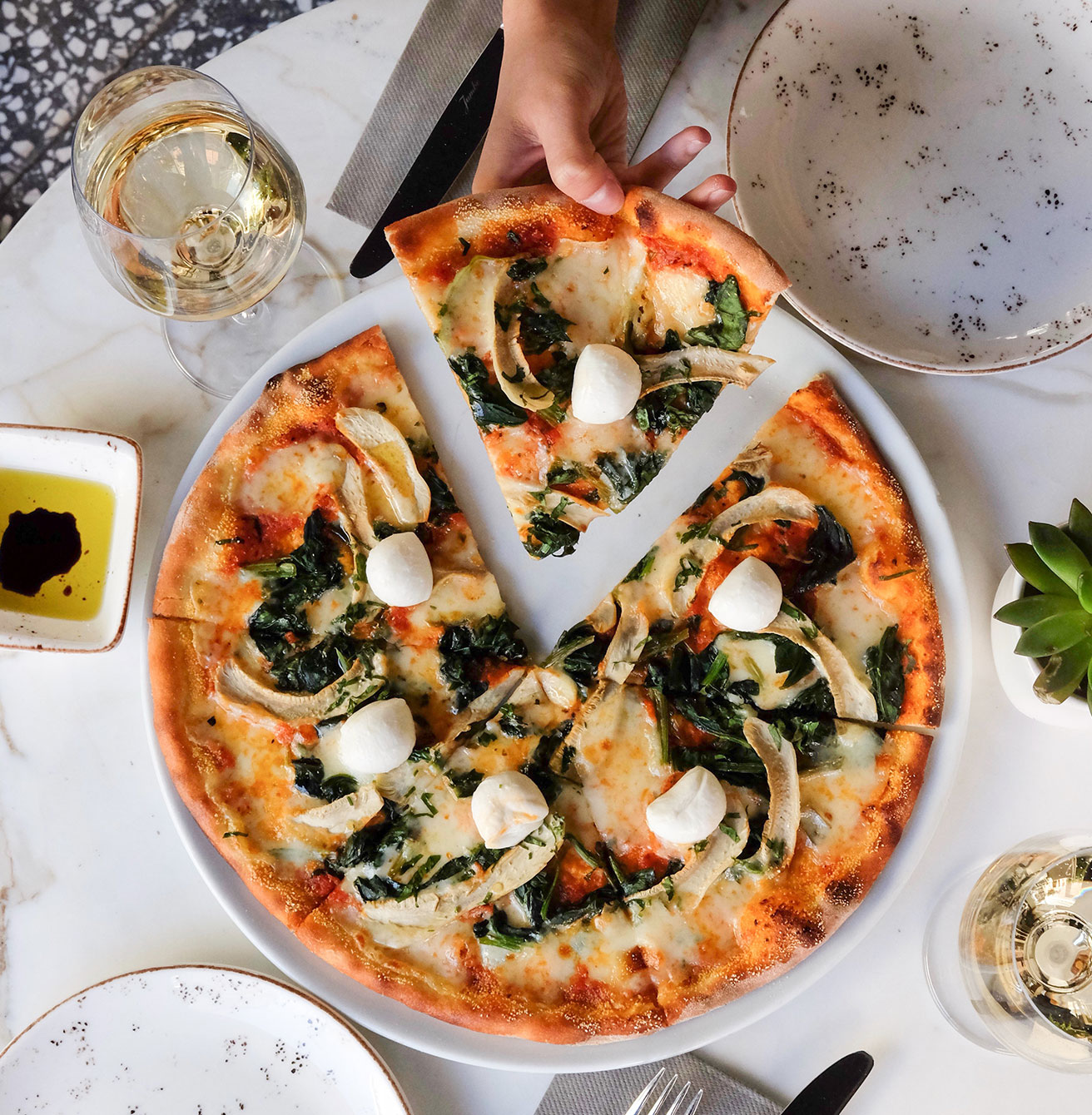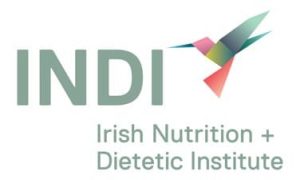The term Intuitive Eating (IE) seems to be popping up everywhere, especially more so in the last couple of years with over 1.4million hashtags on Instagram. It has been widely adopted by dietitians and nutritionists as a non-diet approach to nutrition. But what exactly is it and where did it come from? Is it just another diet wrapped in a fancy bow?

In this post I will aim to explain exactly what intuitive eating, the research and aims behind it and if it is actually worth looking into.
Intuitive eating is defined as ‘a self-care eating framework, which integrates instinct, emotion, and rational thought’. It was originally created by two dietitians, Evelyn Tribole and Elyse Resch in California in 1995 and has been steadily gaining momentum since its inception.
IE adopts a flexible eating style which encourages a healthy attitude towards food as well as promoting body-positivity. Its foundations are based upon ten, evidenced based principles to guide each person towards adopting the approach. Individuals are encouraged to tune into their internal signals to guide them on what, when and how much to eat rather than following specific food rules, diets and restrictions which can ultimately lead to yo-yo dieting, leading to a poor relationship with food, disordered eating, poor mental health and in some cases eating disorders.
Why aren’t we already eating this way?
Well we did at one point. Babies cry when they are hungry, no matter what time of the day and they eat when they can/want to. If a baby isn’t hungry they will not eat, often turning their head away from the food being offered. In the same way when a baby is full they will refuse any further food offered, even if the bowl is still full.
Unfortunately as we grow up we are introduced to food rules, eating schedules and often the mentality of clearing your plate or not wasting food. Now don’t get me wrong, some routines like regular meal patterns are important and not all people will be able to eat when and what they want due to work, social schedules or food insecurity. However growing up around ‘good’ or ‘bad’, ‘healthy’ and ‘unhealthy’ or ‘treat’ foods can encourage a poor relationship with food overtime. Who remembers being promised chocolate after eating all their broccoli at dinner? Why is chocolate considered good and broccoli considered bad? They both nourish us, provide us with energy and fuel us. They are both food.
As we grow up we are also led to believe certain body shapes are the epitome of ‘health’. Slim, tanned, long legged women are considered the definition of success, health and fitness. Is this true? Why are we made to believe this?
We gradually start listening to external cues (the latest diet trend promising us that false definition of health in which the media drives reinforced by meal-plans, home workouts, diet restrictions and rules). This can ultimately pull us away from tuning into our internal cues of what, when and how we (our body) needs nourishment and enjoyment from food.
IE teaches individuals on how to work towards tuning back into our original internal eating cues like hunger, fullness, cravings and how food makes you feel.
Essentially, intuitive eating is normal human eating.
What are the benefits of IE?
There have been over 120 published papers to date supporting the role of intuitive eating from a physical and psychological perspective. With research in adults and also now, in children.
Some of the benefits of IE include;
– Improved lipid profile (increase in the ‘good’ fats and lower ‘bad’ fats)
– Reduced rates of disordered eating and eating disorders
– Better body image and self-esteem
– Lower rates of emotional eating
– Lower frequency of weight cycling
Citations and research papers can be found here.
The ten principles of IE
It is important to remember that these are not more rules which need to be followed rigidly. IE is a flexible approach that takes time and practice to adopt. Every individual who adopts the IE principles will have different approaches, priorities and ways of implementing the IE way. Each principle requires time and patience.
1. Reject the diet mentality
This is the first principle and a very important one. Not as easy as it may sound as we are constantly bombarded with new diets, fads, rules, and restrictions. But it is important to think that the reason there are so many different diets and a multibillion euro industry supporting it is simply put because diets do not work. If they did, there wouldn’t be the industry that is tirelessly pushing the new wonder powder, magic pill or tea that will instantly transform us into the tanned, toned instagrammer encouraging us to go out and buy it. There is not one robust research study in support of long-term weight loss following a diet. In fact, you are more likely to gain weight with dieting, as approximately 60% of people who diet gain back more weight than they lost. Think about how past diets have made you feel. Good at first, maybe losing a small amount of weight but did any of them actually benefit you in the long run? Throw away the diets and move onto principle 2!
2. Honor your hunger
Acknowledge when you feel hungry and feed yourself. Easier said than done maybe but starting off with identifying your physiological hunger rather than emotional hunger is the first step. The second step is eating when you are physically hungry but not starving (there is a hunger scale of 1-10 attached to this principle which will support you in this). Leaving it too long and eating when you are ravenous will more than likely lead to over-eating.
3. Make peace with food
This principle involves getting rid of the mindset that there are ‘good’ and ‘bad’ foods or that some foods are off limits. This can lead to intense feelings of deprivation and restriction which in turn increase bingeing of the off limit foods and guilt. Making peace with food means giving yourself permission to eat all the foods you enjoy. This principle can be quite scary for people at first but after a while allowing yourself to eat that previously banned food will reduce the cravings, deprivation and enable you to enjoy all foods in a safe, non-self judgemental environment.
4. Challenge the food police
Following on from making peace with food. Challenging the food police is thinking about the food rules in your head – the emotional side of eating. While you are physically allowing yourself to eat previously restricted food it is necessary to allow yourself to emotionally enjoy the food removing previous guilt, judgement and ridicule.
By working on this and chipping away at the food police, you’ll begin to look at nutrition in a more helpful way that’s rooted in self care, rather than punishment.
5. Respect your fullness
This point incorporates mindful eating, honoring hunger and respecting fullness. Using the hunger scale in this principle is also helpful when initially tuning into your hunger signals. Not waiting to eat until you are ravenous but somewhat hungry and stopping when you are comfortably full/satisfied and not stuffed.
6. Discover the satisfaction factor
Eating is a pleasurable experience. Most social events in all cultures are centred around food in some way. Pleasure should be at the epicentre of healthful eating. Enjoying tasty food enhances mental health and is part of the human experience! Also, by intentionally choosing pleasurable food, you’re less likely to overeat or experience binges.
7. Cope with your emotions with kindness
The first step of this principle is to acknowledge that food restriction (mental and physical) can trigger senses of loss of control. Feelings of loneliness, anger, loss, boredom and frustration are emotions we all experience. Food may comfort these emotions in the short-term but not in the long term. Identifying and addressing the source of these emotions is the priority rather than using food as an emotional plaster.
This isn’t to say that after a bad day in work going for pizza with friends isn’t in line with IE. It certainly can help in improving your mood but we also need to have other coping skills too, because when food is our only coping skill, that’s when it becomes a problem.
8. Respect your body
Everyone is made of different stuff; different genetics which gives us different characteristics, size, shape, hair, eye colour and personalities. If we were all the same the world would be a very boring place wouldn’t it? If everyone ate exactly the same food in the same amounts and moved exactly the same amount, everyone would still be different sizes and shapes.
Instead of individuals’ weight on the scales, IE focuses on behaviours and health. Respecting your body and appreciating what it can do (which is a lot) will encourage you to feel better about who you are. When you are nourishing your body, moving it when and where you can, sleeping well and managing stress your weight will settle in a range appropriate for you and you will also feel better in your own skin.
9. Movement – feel the difference
Along with diet culture, food rules and restrictions come rules and expectations around exercise. Sometimes militant exercise routines. Promises of 30 minute belly blasts, HIIT fat melting sessions and cardio sweat sessions are everywhere. Individuals are often taking up unrealistic fitness programmes incorporating exercises and activities that they hate with the aim of weight loss. Who is going to keep doing something they don’t enjoy every day for longer than a month or two? Uncoupling the link between exercise and weight loss is paramount. What we should focus on is how activity/movement makes us feel. Going for a brisk walk, cycle jog or even a gym session that you enjoy can make you feel energised, improve mood and reduce stress (as well as the positive physical effects). The main thing is to choose what you enjoy and do it when you want to.
10. Honor your health with gentle nutrition
On commencing the process of IE, it can, at the start seem that eating healthfully is not considered important. It is. However the first stages of IE are about creating a positive relationship with ALL foods first. Otherwise focusing on nutrition in the first instance can be warped back into the diet mentality. Addressing the first nine principles will enable the individual to then consider nutrition.
There is no perfect way to eat. Everyone’s ideal way of nourishment is different. It is what you eat consistently over time that will have the most impact. Progress, not perfection!
Finally
Intuitive eating doesn’t actually come easily (or intuitively). It takes perseverance, practice and time. It can help to seek support from a professional when embarking on the IE journey to support you in identifying how to strategically and practically apply the principles of IE into your life. IE will look different to everyone, so take a flexible approach to it, be patient and reflect on the positives the principles make to your life.









